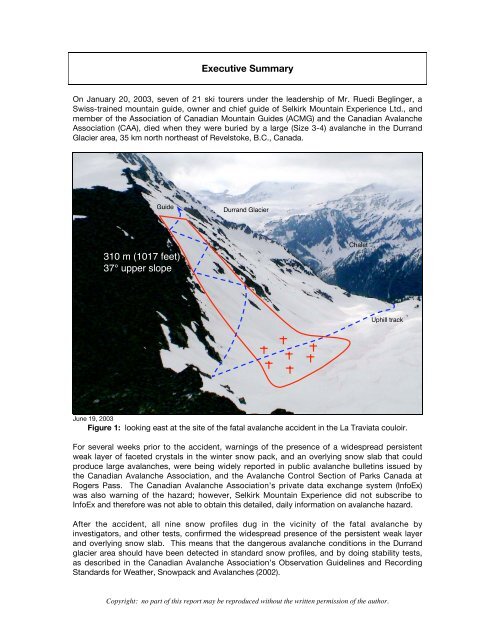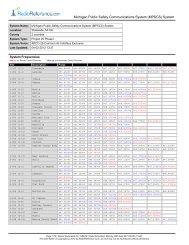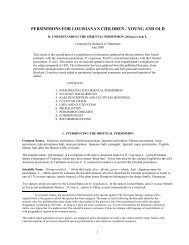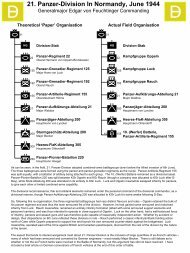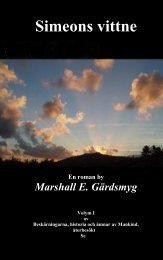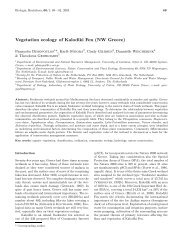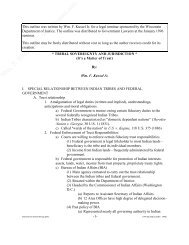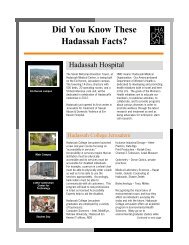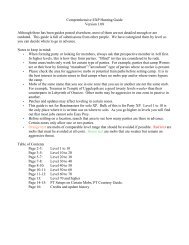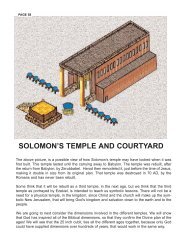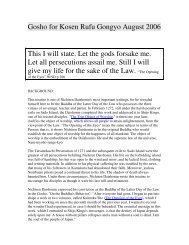Analysis of the Durrand Glacier Avalanche Accident
Analysis of the Durrand Glacier Avalanche Accident
Analysis of the Durrand Glacier Avalanche Accident
You also want an ePaper? Increase the reach of your titles
YUMPU automatically turns print PDFs into web optimized ePapers that Google loves.
Executive Summary<br />
On January 20, 2003, seven <strong>of</strong> 21 ski tourers under <strong>the</strong> leadership <strong>of</strong> Mr. Ruedi Beglinger, a<br />
Swiss-trained mountain guide, owner and chief guide <strong>of</strong> Selkirk Mountain Experience Ltd., and<br />
member <strong>of</strong> <strong>the</strong> Association <strong>of</strong> Canadian Mountain Guides (ACMG) and <strong>the</strong> Canadian <strong>Avalanche</strong><br />
Association (CAA), died when <strong>the</strong>y were buried by a large (Size 3-4) avalanche in <strong>the</strong> <strong>Durrand</strong><br />
<strong>Glacier</strong> area, 35 km north nor<strong>the</strong>ast <strong>of</strong> Revelstoke, B.C., Canada.<br />
Guide<br />
310 m (1017 feet)<br />
37° upper slope<br />
<strong>Durrand</strong> <strong>Glacier</strong><br />
Chalet<br />
Uphill track<br />
June 19, 2003<br />
Figure 1: looking east at <strong>the</strong> site <strong>of</strong> <strong>the</strong> fatal avalanche accident in <strong>the</strong> La Traviata couloir.<br />
For several weeks prior to <strong>the</strong> accident, warnings <strong>of</strong> <strong>the</strong> presence <strong>of</strong> a widespread persistent<br />
weak layer <strong>of</strong> faceted crystals in <strong>the</strong> winter snow pack, and an overlying snow slab that could<br />
produce large avalanches, were being widely reported in public avalanche bulletins issued by<br />
<strong>the</strong> Canadian <strong>Avalanche</strong> Association, and <strong>the</strong> <strong>Avalanche</strong> Control Section <strong>of</strong> Parks Canada at<br />
Rogers Pass. The Canadian <strong>Avalanche</strong> Association’s private data exchange system (InfoEx)<br />
was also warning <strong>of</strong> <strong>the</strong> hazard; however, Selkirk Mountain Experience did not subscribe to<br />
InfoEx and <strong>the</strong>refore was not able to obtain this detailed, daily information on avalanche hazard.<br />
After <strong>the</strong> accident, all nine snow pr<strong>of</strong>iles dug in <strong>the</strong> vicinity <strong>of</strong> <strong>the</strong> fatal avalanche by<br />
investigators, and o<strong>the</strong>r tests, confirmed <strong>the</strong> widespread presence <strong>of</strong> <strong>the</strong> persistent weak layer<br />
and overlying snow slab. This means that <strong>the</strong> dangerous avalanche conditions in <strong>the</strong> <strong>Durrand</strong><br />
glacier area should have been detected in standard snow pr<strong>of</strong>iles, and by doing stability tests,<br />
as described in <strong>the</strong> Canadian <strong>Avalanche</strong> Association’s Observation Guidelines and Recording<br />
Standards for Wea<strong>the</strong>r, Snowpack and <strong>Avalanche</strong>s (2002).<br />
Copyright: no part <strong>of</strong> this report may be reproduced without <strong>the</strong> written permission <strong>of</strong> <strong>the</strong> author.


